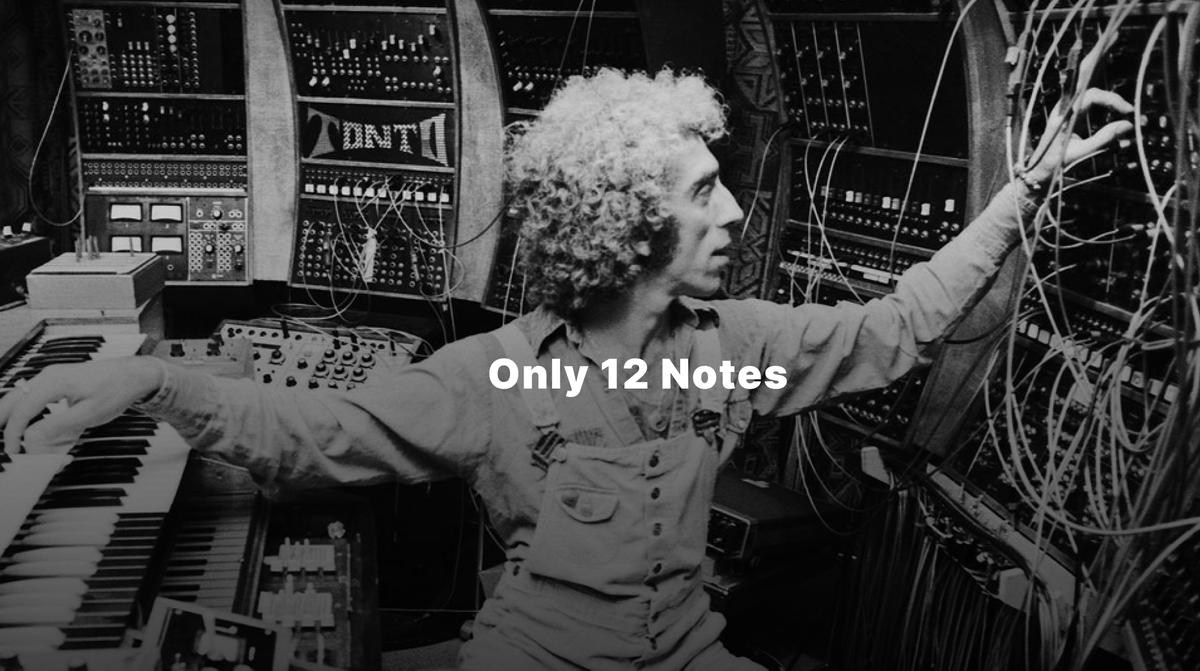Hey, what's up everybody, It's Jake T. back once again with the latest edition of our blog! Today we're going to take a look at some of our favorite keyboardists who were brave enough to be early adopters of the synthesizer. These artists saw the boundless possibilities of synthesis and took the plunge, taking their music (and audiences) into exciting and unexpected territories.
But before we get into all that I want to talk about "West Coast," and "East Coast" synthesis.

East, and West
The invention of the synthesizer happened concurrently between two people: Don Buchla, and Bob Moog, who had very different ideas about how the synthesizer was going to interact with (at the time) modern music. These two schools of thought eventually became known as East Coast and West Coast synthesis. Named for the coastal regions both engineers resided, Don in the West, and Bob in the East.
West Coast synthesis approaches the synthesizer as an entirely new music-making tool that should divorce itself from the Western music canon. The belief was that synthesizers didn't need to conform to music, music would conform to it. Early Buchla synthesizers featured no keyboard to speak of and could be tuned far outside the confines of equal temperament.
While this is an incredibly sincere, and somewhat hopeful outlook on what the future of music could be. Musicians who had already spent decades building and developing their skills were a little incredulous at the thought. That's why they were quicker to embrace the Moog and along with it East Coast synthesis.
East Coast synthesis, is defined by its embracing of Western tonal music. Moog synthesizers came with keyboard controllers as well as a more limited tuning system. This is not to say you couldn't detune a Moog synthesizer, just that its oscillators were calibrated with this tuning in mind.
Because of East Coast synthesis' embrace of the keyboard, it was quickly adopted by some of the world's most prominent musicians. For instance one of the earliest and most prominent examples of a Moog system in popular music can be heard on the Beatles' 1969 masterpiece Abbey Road. The synthesizer made it into songs "Maxwell's Silver Hammer" " I Want You," "Here Comes the Sun," and "Because."
Moog became THE name in synthesis for decades to come helping many musicians unlock their creativity, and take their first steps into the world of synthesizers.
But this is not an article about Moog, this is an article about keyboardists. So without further adieu let's take a look at some of my personal keyboard heroes, and how their artistry helped to push synthesizers into the mainstream.

Wendy Carlos
Wendy Carlos is one of the most important American composers period. A pioneering force in both synthesis and the rights of queer people everywhere she is one of the most important musicians to ever grace a Moog modular system.
Born in 1939, she gained fame with her 1968 album "Switched-On Bach, which was the first classical music album performed entirely on a synthesizer. The album not only won three Grammys, but it also served as many American's entry into electronic music.
Carlos would then go on to compose the soundtracks for iconic films "A Clockwork Orange," "The Shining," and "Tron."
As a transgender woman, Carlos has also been a trailblazer in terms of visibility and advocacy within the LGBTQ+ community. Her work has not only had a lasting impact on Electronic music, but she also served as a role model for young people questioning their identity.

Herbie Hancock
A pioneering American jazz pianist, keyboardist, composer, and bandleader, Herbie Hancock is the voice that brought synthesis to jazz. While there are examples of others who may have predated his experiments with electronics, there is no one else who has come close to Hancock's influence.
Born in 1940, he first gained recognition as a member of the Miles Davis Quintet in the 1960s, where he helped to redefine jazz with his innovative use of electronic instruments.
Hancock's solo career took off with albums like "Head Hunters", blending jazz with funk and electronic elements. He's a prolific composer, known for tracks like "Chameleon" and "Cantaloupe Island," and has won multiple Grammy Awards. Hancock continues to influence both jazz and electronic music, constantly pushing the boundaries of sound and technology.

Ryuichi Sakamoto
One of the most important composers ever, Ryuichi Sakamoto was a Japanese composer, pianist, and electronic music producer, celebrated for his diverse contributions to music and film.
Born in 1952, he co-founded the influential electronic band Yellow Magic Orchestra (YMO) in the late 1970s, which was pivotal in the development of synthpop and electronic music worldwide.
Sakamoto's solo career includes a wide range of works, from experimental electronic albums to classical compositions. He won an Academy Award for Best Original Score for "The Last Emperor" and continued to score films, collaborate with artists like David Sylvian, and release solo albums until his death in 2023. Sakamoto was also a committed environmental activist and advocate for peace, whose passion for sustainability frequently showed in his work. We'd be remiss in not saying rest in peace.
And there you have it folks, three of our favorite pioneers in the world of performance and synthesis. These artists' footprint is undeniable, but we're curious. Who are some of your favorite artists? What kind of content would you like to see from us in the future? Let us know, and as always...keep creating!


